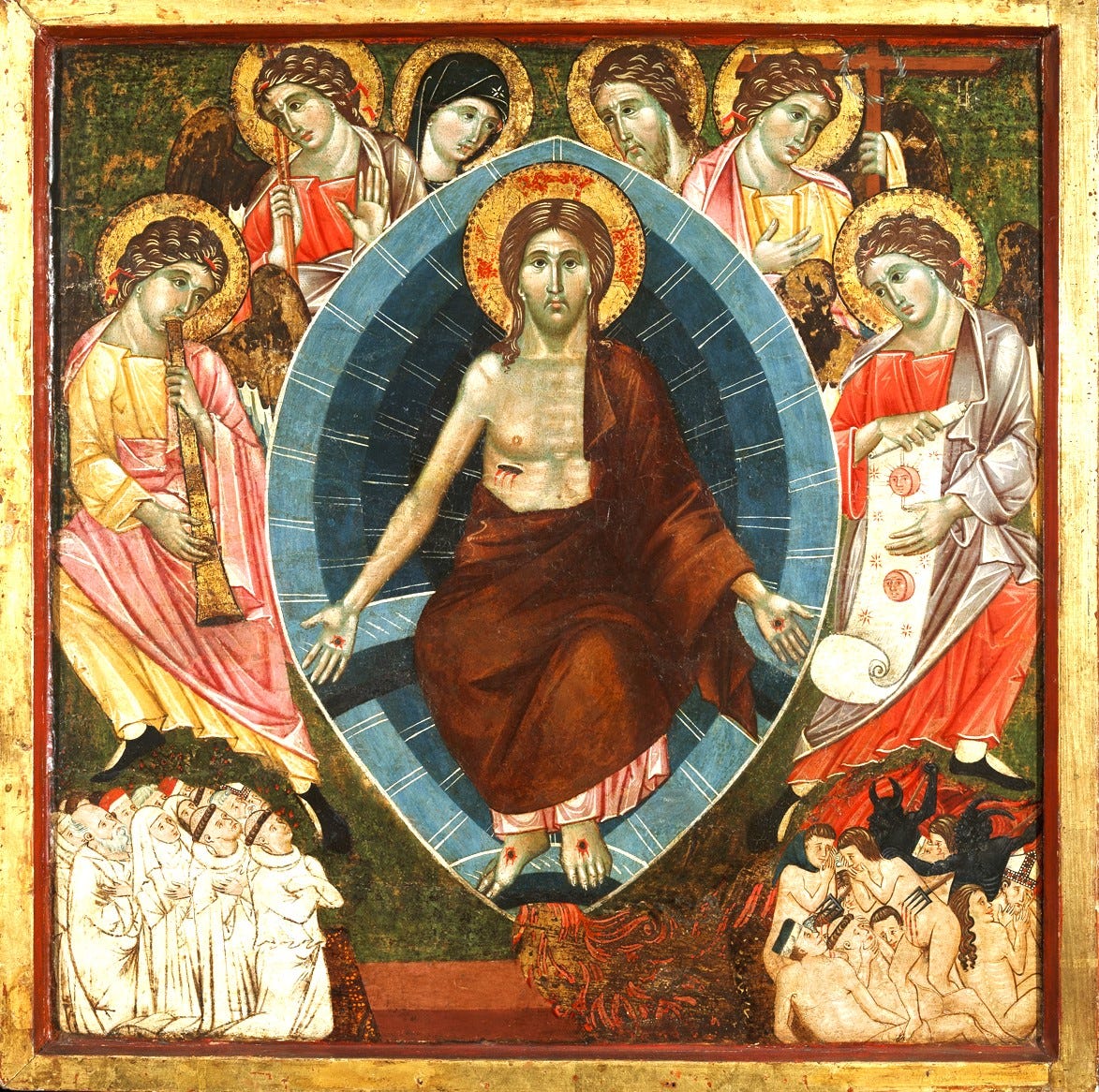
I’m in Norcia for a few days, visiting friends and taking long walks. So, today’s post will be for paid subscribers: a a single-shot, brief introduction to the visual ideas - and political origins - of Italo-Byzantine art. Until the opening of the 13th century, all the Christian art of Italy was Byzantine in form, and because much of the Italian peninsula was - at least nominally - for a significant time under the suzerainty of the Byzantine Empire, that art form developed its own unique national character here.
We’ll definitely be talking more about the Italo-Byzantine as we progress through our examination of early medieval, pre-Schism Christian art. As the basic form was spread throughout the many nationalities of the empire, before the fall of the Western Empire, it was modified and nationalised, so we have Byzantine-Egyptian, Greek Byzantine, Ethiopian Byzantine

Visiting St. Isaac of Spoleto on Monday
I’ll be heading home on Monday, when I’ll be making a little side trip to Spoleto to visit the incredible crypt church there of St. Isaac the Syrian (not to be confused with St. Isaac OF Syria, who was someone else). Isaac was the first Christian bishop of Spoleto, a town of great importance for the Roman Empire. He came as part of a kind of delegation of monks, originally from Syria, sent by the pope to try to tame the wild men of deepest Umbria, and he set up a monastery that became a kind of monastic staging ground for missionary monastics.
Isaac was one of the group of Syrian monastics who settled in this area and brought Christianity to the pagan locals by being miraculous wonderworkers - always works a treat. St. Isaac established a Syrian style monastic foundation high up on the mountain - in a series of caves - behind the town of Spoleto, and that monastery grew and survived until the 18th century, adopting the Benedictine Rule along the way. A descendant of his original monastery is still there, now occupied by Franciscan friars. It’s a long and amazing story that we’ll get into with our paid subscribers next week.
Anyway, phone/internet reception up here on the mountain, in the remote wilds of the Apennines, isn’t great, so though I’m able to set up shop in the guesthouse meeting room, I fear it’s going to be difficult to really produce anything until I’m home. We’ll try for Tuesday.
Pax.
HJMW
At the Sacred Images Project we talk about Christian life, thought, history and culture through the lens of the first 1200 years of sacred art. The publication is supported by subscriptions, so apart from plugging my shop, there is no advertising or pop-ups. It’s my full time job, but it’s still not bringing a full time income, so I can’t yet provide all the things I want to and am planning for.
You can subscribe for free to get one and a half posts a week.
For $9/month you also get the second half of the third post, plus a weekly paywalled in-depth article on our great sacred patrimony. There are also occasional extras like downloadable exclusive high resolution printable images, ebooks, mini-courses, videos and eventually podcasts.
Have you been polled?
In the two-part post last week on where the Project is going, I ran a series of polls asking readers, both paid and free, what sort of material you’re most enjoying, what you might like to have as free downloads, courses and extras for paid subscribers.
It’s all in aid of building up what we’re going to do next. The pic above is a hint; it’s going to involve a new website and host for this blog. Annual subscribers will be able to join us on the new platform, and participate more.
If you didn’t get polled on Saturday, don’t miss it. Your ideas as a reader, commenter and member of the club are a big part of all this.
Go here to be counted in. There’s one day left for the polls.
Subscribe to join us below, where we’ll talk about how Italy got Byzantine:






